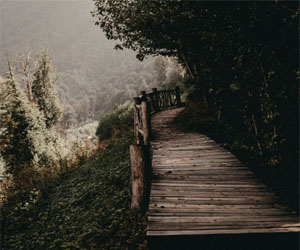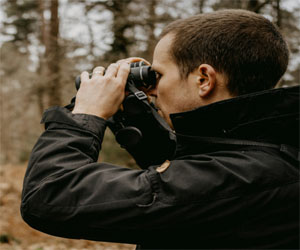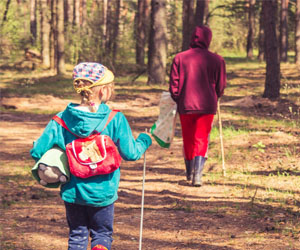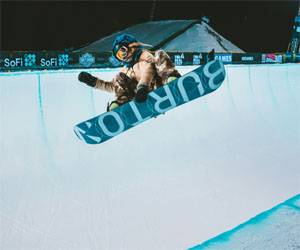


A Fascinating Window Into Avian Worlds

Birds are extraordinary creatures that captivate the imagination of both casual nature enthusiasts and seasoned ornithologists. Whether you're a dedicated birdwatcher or simply enjoy the occasional glimpse of these feathered wonders in your backyard, observing bird behavior can be a source of endless fascination and knowledge. It provides a unique window into the avian world, offering insights into their intricate lives, social dynamics, and survival strategies. In this article, we will explore the importance of bird behavior observation and the valuable lessons it offers.
Understanding Species Diversity: One of the most significant advantages of observing bird behavior is gaining a deeper understanding of the remarkable diversity of bird species. Each type of bird has its own unique behaviors and characteristics. Whether it's the elaborate courtship displays of the male peacock, the synchronized aerial acrobatics of starlings, or the cooperative hunting tactics of Harris's hawks, every species has its distinct set of behaviors.
Insights Into Ecology: Bird behavior observation can provide valuable insights into the ecological niches that different bird species occupy. By observing their feeding habits, nesting preferences, and interactions with other species, we can better understand the role each bird plays in the ecosystem. For instance, seed-eating birds like finches are essential for dispersing plant seeds, contributing to forest regeneration.
Breeding And Reproduction: The study of bird behavior is essential for understanding the intricate world of avian reproduction. From the construction of nests to the feeding of chicks, each species exhibits unique parenting behaviors. Observing these behaviors allows ornithologists to monitor the health of bird populations and make informed conservation decisions.
Communication: Birds are well-known for their complex and diverse forms of communication. Through vocalizations, body language, and displays, they convey information about territory, courtship, and danger. By observing these behaviors, we can decode the language of birds, gaining insights into their social structures and hierarchies.
Adaptations And Survival Strategies: Bird behavior provides a window into the remarkable adaptations and survival strategies developed over millions of years. For example, the unique behaviors of penguins, such as huddling together for warmth or regurgitating food for their chicks, demonstrate how they have evolved to thrive in harsh, frigid environments.
Conservation And Biodiversity: Understanding bird behavior is crucial for conservation efforts. Changes in behavior can be an early indicator of environmental stressors or habitat loss. By monitoring behavioral shifts, scientists can take proactive measures to protect threatened bird species and their habitats.
Enjoyment And Awe: Beyond the scientific aspects, bird behavior observation offers an unparalleled sense of enjoyment and awe. Witnessing the graceful flight of a hawk, the melodious songs of songbirds, or the intricate dance of a courting bird can be a deeply enriching and meditative experience, connecting us to the beauty of the natural world.
Bird behavior observation is a gateway to a world of wonder and knowledge. It not only deepens our appreciation of these remarkable creatures but also plays a crucial role in their conservation. So, whether you're a dedicated birdwatcher or simply enjoy watching the birds in your neighborhood, take the time to observe and appreciate the intricate behaviors of our avian friends. It's a journey that will forever expand your understanding of the natural world and fill you with a sense of wonder.
An Adventure Like No Other
 Challenging terrain in mountain biking can include everything from steep inclines and rocky paths to tight switchbacks and mud-soaked trails. These elements add a level of complexity and danger to the sport, making it an adrenaline-pumping experience for those who crave adventure.
Challenging terrain in mountain biking can include everything from steep inclines and rocky paths to tight switchbacks and mud-soaked trails. These elements add a level of complexity and danger to the sport, making it an adrenaline-pumping experience for those who crave adventure.
One of the key attractions of mountain biking through challenging terrain is the constant need for skill and concentration. Riders must be fully engaged in their surroundings, making split-second decisions on how to navigate obstacles. It's a test of physical strength, mental acuity, and technical prowess. The rewards of successfully navigating these difficult paths are not just the satisfaction of conquering them but also the breathtaking views and the sense of accomplishment that comes with it.
For many mountain bikers, conquering challenging terrain is a personal journey of growth and self-discovery. It pushes them to their limits and helps them break through mental barriers. Whether it's mastering a tricky downhill section, clearing a daunting rock garden, or tackling a steep climb, every challenge overcome is a victory and a testament to the rider's determination.
Safety is a paramount concern when mountain biking through challenging terrain. Riders must wear appropriate protective gear, including a helmet, gloves, and body armor. Additionally, a well-maintained mountain bike with sturdy brakes and reliable suspension is essential. It's also a good idea to ride with a buddy or let someone know your planned route in case of emergencies.
In terms of technique, riders should hone their skills on easier trails before attempting the more challenging ones. Proper body positioning, weight distribution, and braking are crucial to maintaining control and safety on steep descents and tricky ascents.
Embrace The Great Outdoors
 Education And Preparation: One of the most important aspects of wilderness adventure for beginners is proper education and preparation. Familiarize yourself with the specific requirements of your chosen activity, from the gear needed to the environmental conditions you'll encounter. There are numerous online resources, books, and local outdoor organizations that offer workshops and courses to help beginners get started.
Education And Preparation: One of the most important aspects of wilderness adventure for beginners is proper education and preparation. Familiarize yourself with the specific requirements of your chosen activity, from the gear needed to the environmental conditions you'll encounter. There are numerous online resources, books, and local outdoor organizations that offer workshops and courses to help beginners get started.
Gear And Equipment: Investing in the right gear and equipment is a pivotal step for a successful wilderness adventure. Ensure you have the essential items like suitable clothing, comfortable footwear, and a backpack. Make a checklist and double-check that you have everything you need. Rental options are available if you're not ready to invest in gear right away.
Safety First: Safety should always be a top priority. Research the potential risks associated with your chosen adventure, and learn how to mitigate them. For example, if you're hiking in the wilderness, it's crucial to understand navigation, wildlife safety, and first aid. Carry a first-aid kit and let someone know about your plans, including your estimated return time.
Start Small: It's perfectly fine to start with shorter and less challenging trips. Many wilderness areas have well-marked and maintained trails suitable for beginners. Gradually work your way up to more strenuous and remote adventures as your skills and confidence grow.
Leave No Trace: An essential principle for beginners in the wilderness is Leave No Trace. This ethic involves taking care of nature by minimizing your impact. Always pack out what you pack in, dispose of waste responsibly, and respect wildlife and their habitats.
Learn From Experience: Experience is the best teacher when it comes to wilderness adventure for beginners. Embrace each trip as an opportunity to learn and improve. Reflect on your experiences and adapt your skills and knowledge accordingly.
Unleashing The Thrill Of The Mountain
 2. Ollies And Nollies: Ollies are versatile tricks where the rider pops the board into the air by shifting their weight and pushing down on the tail. Nollies are similar but initiated by pushing down on the nose. These tricks are the foundation for more advanced maneuvers and add an element of creativity to your riding.
2. Ollies And Nollies: Ollies are versatile tricks where the rider pops the board into the air by shifting their weight and pushing down on the tail. Nollies are similar but initiated by pushing down on the nose. These tricks are the foundation for more advanced maneuvers and add an element of creativity to your riding.
3. Spins: Spinning is a dynamic component of snowboarding stunts. Start with 180-degree spins (half-cab) and work your way up to 360s, 540s, and even 720s. The key is using your upper body to initiate the spin while keeping your lower body aligned with the board.
4. Flips And Inverts: Flips and inverts take snowboarding to the next level. Tricks like backflips and front flips involve rotating your body while airborne. Inverts, such as handplants or hand drags, add an acrobatic twist to your riding. These tricks demand skill, precision, and a fearless spirit.
5. Rails And Boxes: Terrain park features like rails, boxes, and wallrides provide opportunities for grinding tricks. Practice slides, presses, and jibs on these features to enhance your trick repertoire. Sliding down a rail with style requires balance, precision, and confidence.
6. The 720 And Beyond: Mastering the 720 is a significant milestone for snowboarders. A 720 is a double spin where you complete two full rotations in the air. Once you've conquered the 720, you can explore more advanced spins like the 900 or even the elusive 1080.
7. Halfpipe Tricks: The halfpipe is a haven for advanced snowboarders. Here, you can attempt aerial tricks and spins. Learn to navigate the walls of the pipe and execute stylish tricks like the McTwist, the Method Air, and the Cab 720.
8. Grabs And Rotations Combined: Combining grabs with spins and flips can result in breathtaking and complex tricks. For example, a method grab while executing a backside 540 or a melon grab during a frontside 720 adds an artistic touch to your riding.
Key Sports Injury Prevention Principles
 3. Flexibility And Mobility: Flexibility is key to injury prevention. Incorporating regular stretching exercises into your routine improves joint range of motion and reduces the risk of muscle strains and tears. Dynamic stretching before activity and static stretching afterward are both beneficial.
3. Flexibility And Mobility: Flexibility is key to injury prevention. Incorporating regular stretching exercises into your routine improves joint range of motion and reduces the risk of muscle strains and tears. Dynamic stretching before activity and static stretching afterward are both beneficial.
4. Proper Technique And Form: One of the primary causes of sports injuries is incorrect form and technique. To prevent injuries, athletes should receive proper coaching to ensure they are using correct form when participating in their sport.
5. Gradual Progression: Avoid the temptation to push your limits too quickly. Progress should be gradual and based on your current fitness level. Rapidly increasing the intensity or duration of workouts can lead to overuse injuries.
Mastering The Ocean's Dance
 Balance is a fundamental aspect of the art of riding the waves. Surfing is about harmonizing the body's equilibrium with the dynamic forces of the ocean. The surfer stands atop their board, shifting their weight in precise, nuanced movements to maintain control and navigate the waves. It's a dance that demands poise and coordination, and over time, surfers develop an intuitive sense of balance that becomes second nature.
Balance is a fundamental aspect of the art of riding the waves. Surfing is about harmonizing the body's equilibrium with the dynamic forces of the ocean. The surfer stands atop their board, shifting their weight in precise, nuanced movements to maintain control and navigate the waves. It's a dance that demands poise and coordination, and over time, surfers develop an intuitive sense of balance that becomes second nature.
A crucial element of this art is timing. To catch a wave and ride it effectively, surfers must judge the perfect moment to paddle and pop up onto their board. This split-second decision is the difference between a thrilling ride and an untimely wipeout. It's a testament to the artistry of surfing that even the most experienced surfers never stop honing their timing skills.
The art of riding the waves also encompasses the rider's connection to their surfboard. Surfboards come in various shapes and sizes, each designed for specific wave conditions and styles of riding. The choice of surfboard is akin to selecting a paintbrush for an artist or an instrument for a musician. The surfer must understand their board intimately, recognizing its capabilities and limitations to create a harmonious synergy between themselves and their craft.
Furthermore, surfing is not just about conquering the ocean; it's about understanding and respecting it. Surfers are stewards of the sea, often leading the charge in environmental conservation efforts.